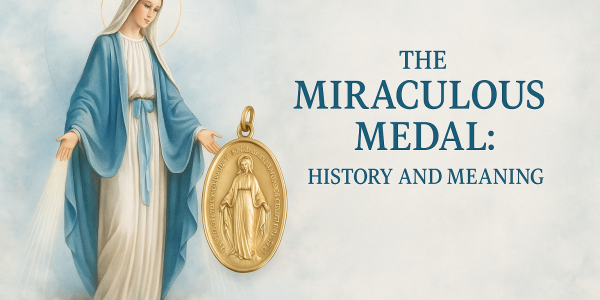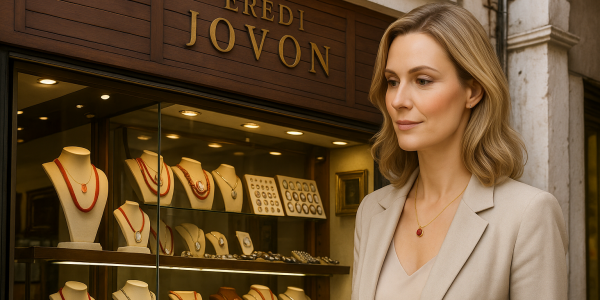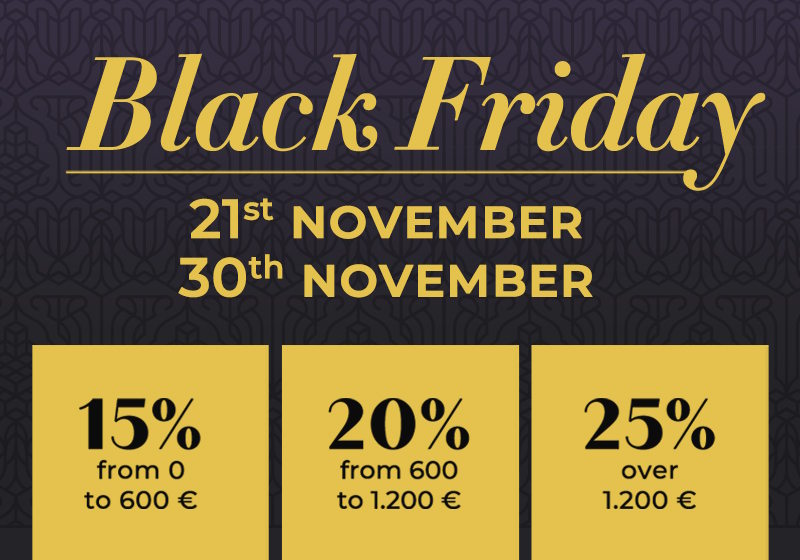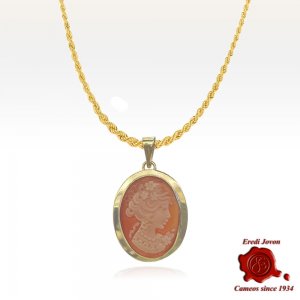Cameo Brooch History: From Ancient Times to Modern Era

"Each cameo is a portrait carved in time: more than a jewel, it is a fragment of eternity" attributed to Napoleon.
What is a Cameo Brooch and his history?
The term “Cameo” derives from the Arabic word “gama'il” (flower bud), from which we arrived at today's cameo through the ancient French name “camaheu”.
A Cameo Brooch is a jewel made through the engraving of a stratified stone or a shell with classic characters.
The creation of a cameo is an ancient art, primarily expressed through hand carving on shell or hardstone, using the natural color layers of the material to sculpt figures in relief.

Shell Cameos: Brooch, Pendant & Locket
Authentic Italian shell cameos—brooches, lockets and pendants that blend heritage, elegance and timeless charm.
View Shell CameosSo, what are cameos Made of? So what is a cameo ?
Techniques range from traditional carving on sardonyx and cornelian shells to the more complex engraving on agate, and even high-definition micro sculpture. Industrial versions in resin or glass also exist for those new to the world of cameos. Each technique tells a story, but only handcrafted carving ensures the absolute uniqueness of each piece.
Of course, we must also mention other beloved cameo stone at Eredi Jovon, such as Red Coral! And obviously others like: turquoise, lapis lazuli, and malachite — each one carefully selected and cherished for its beauty and character.

The history of Cameo jewelry
Perhaps the very first cameo in history can be traced back to Ancient Egypt — more precisely, to the pharaohs' cartouches. These often appeared as seal rings engraved with the ruler’s name, symbolizing identity, royal authority, and serving as protective amulets.
In Roman times, cameos experienced widespread popularity and evolved into true works of art, meticulously carved on agate, onyx, and sardonyx. These cameos were especially rings!
What you mean for cameo rings?
The cameo was used as a “signature”: The seal of the “pater familias” was often affixed as a signature on documents, so his ring became a symbol of both authority and belonging.
A little curiosity: in Roman times, the person who engraved the stones to personalize them for the noble who would then affix the seal was called a “signarius.” Do you notice any resonance with the word “signature”? It’s no coincidence!
Look to this picture:

The most iconic Roman-era cameo is the Gemma Augustea (nr.2), a masterpiece celebrating Emperor Augustus and symbolizing the power and divine status of the imperial family.
Other famous cameos are: the “Gonzaga Cameo” (nr.1) and the “Portland Vase” (nr.3)
In this post of our blog, we spoke about The 3 Most Famous Cameos in the World
Cameo Brooch thought the centuries
During the Renaissance, there was a revival of the art of cameo carving, particularly with the use of seashells. One notable example is Simonetta Vespucci, who is depicted wearing a cameo and coral jewels in a famous portrait by Sandro Botticelli, symbolizing beauty, elegance, and classical inspiration.
During the Napoleonic era, cameos experienced a new golden age, fueled by the rediscovery of Pompeii and Napoleon’s passion for classical art. Empress Joséphine wore shell cameos crafted by the imperial court jeweler. Meanwhile, volcanic lava cameos from southern Italy became cherished souvenirs for Grand Tour travelers.In this post in our blog we talk about The influence of Pompeii's Frescoes and mosaics on Engraved cameo
Now let's speak about Victorian Cameo Brooches.
During the Victorian era, the cameo became a beloved jewel symbolizing femininity, elegance, and remembrance. It often featured idealized female profiles, deities, or floral motifs, and was typically carved on shell. Mourning cameos in onyx or jet were also common, worn in memory of lost loved ones. Queen Victoria, a great admirer, helped make them a true fashion staple across Europe. It was a Century of Elegance and still now we can appreciate the Enduring Allure of Victorian Cameos
Cameo Brooches today
What a Cameo Means today?
A handcrafted jewel symbolizing the excellence of Made in Italy. An ancient splendor that is being rediscovered all over the world.
The ancient art of the cameo returns to the forefront of the most famous international red carpets and conquers the most renowned tourist locations: from Hollywood stars to royal boxes, to Italian celebrities, the cameo starts from the goldsmith tradition of Torre del Greco to reach all over the world creating the perfect combination of ancient and modern.

Italian Cameo Jewelry Collection
Timeless cameos hand-carved in Italy: wearable works of art that tell your story with elegance and history.
Explore Cameo CollectionBut let’s look at some practical examples with VIPs we all know: Jimi Hendrix wore one on the lapel of his jacket; Jacqueline Kennedy Onassis owned an elegant bracelet set with cameos; Elizabeth Taylor was a devoted collector; and most recently, Rihanna paid homage to this ancient art.
All the corals and cameos worked by Eredi Jovon are made in our artisan workshop in Venice and Torre del Greco, following the ancient rules of carving. This tradition is handed down from generation to generation in the Eredi Jovon family, keeping alive the art of working coral and shells.
In our Venice workshop, for example, we can hand-carve a cameo starting from a photo or drawing provided by the client. This piece of jewelry becomes a family heirloom and is lovingly passed from mother to child for future generations. This video gives you an idea of the exceptional quality and uniqueness of this work.
How to choose a Cameo Brooch?
To choose the right cameo you must watch he quality of the materials, the precision of the incisions and its mount.
The cost can be variable from the quality of the materials and the precision of the artisan and can variety if it is old. In this post of our blog we explain How to give your Cameo Brooch its Value
The most important thing is how this cameo will speak to you… a piece of jewelry must speak to its wearer, reflect who they are, and always tell a story: yours!

Custom Cameo Portrait from Your Photo
Turn a photo into a handcrafted Italian cameo: a one-of-a-kind jewel that celebrates your story and legacy forever.
Customize Your CameoCaring for your Cameo Brooch
Keeping your cameo beautiful and shining over time is no big deal. Surely over time the dust and patina that will be created on your cameo will give it an even more beautiful touch: the three-dimensionality will be accentuated, and its beauty will increase in charm. You must, however, be careful about a couple of things:
• keep the cameo in its box separate from other jewelry so as to prevent fractures or rubbing; if you plan to clean the mount, be very careful about the chemicals used to polish gold and silver.
• Therefore, limit yourself to cleaning only the setting without touching the cameo. This way your jewelry will be preserved over time and become the family heirloom to be passed from generation to generation.
FAQ on cameo brooch
Q: How can you determine if a cameo is old or new?
A: To understand if a cameo is antique, it is useful to observe the quality of the engraving, the materials used, the presence of signs of wear and the setting. Antique cameos often have more refined details, hand engravings and natural materials such as shell, coral, ivory (that now is forbidden) or semi-precious stones.If you want to understand more about this, you can read this post talking about: How to age and apprise antique Cameos

In this post of our blog we explain how to age cameos
Q: What does a Cameo Brooch represent?
A: Usually a cameo brooch represents a woman. But a cameo is more than that: it’s love for beautiful things and for art, it’s elegance, protection and wish of good fortune. It’s a symbol of love thought generations.
Q: what is the story behind the Cameos?
It's very similar to the history of the Cornicello and the other mighty and powerful Italian good luck charms
So, it has a thousand-year tradition from the ancient age where they use seals, signet rings and decorative objects, then in the Renaissance there is a resumption of shell engraving, after that in the Victorian age there is the birth of the Parisian school and the Napoleonic support with traditional techniques(multi-layer carving, glass cameo) and materials(agate, onyx, sardonyx, shell and glass) and in the XX century the main materials are: shell and glass and it becomes a very popular as fashion accessory.
I leave you with our family trademark: "The biggest hug in the world."

Information
Last post
-

The History of the Miraculous Medal
The Miraculous Medal carries a story of light, comfort, and hope. A symbol that guides and protects, reminding...
-

How to Choose the Perfect Necklace: The Complete Guide by Eredi Jovon
Discover how to choose the perfect necklace: Eredi Jovon’s complete guide reveals...
-

Eredi Jovon Earrings: A Journey through Light, Form, and Italian Craftsmanship
From the workshops of Venice, where the light of the sea meets the hand of the artisan, Eredi Jovon creates...













